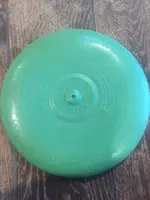Interesting to browse through, I was brainstorming personal examples of depreciation and arrived at a good example.
I found a 1st generation green 1950s Wham-O Pluto Platter Frisbee around 10 years ago and as I recall sold it for 556.00 bucks.

I just checked eBay and found the same one; green 1st gen, and it went for 109.02.
It seems that there are 2 main motivators for collecting (besides financial/investment reasons); those who are guided by heart; personal memories and nostalgia, and those who are guided by more heady academic inclinations (which can also be personal in a more sublimated sense, but not nostalgic). The objects of desire for nostalgia collectors change generationally; WWI stuff used to be good, but now all the veterans and most of their kids are dead, so the market has largely bottomed-out. Pop-culture stuff like "I Love Lucy" paraphernalia or many toys of the Boomer generation seem to have lost value also, as the active collectors have already competed to complete or fill their collections and thus when duplicate fresh material appears now there is no longer a competitive market. A Roy Rogers lunchbox doesn't mean anything to me or just about anyone else born after Roy Rogers lost cultural relevance, and if not for boomers still spending money on them I would consider such items worthless, as they likely will be when the generation associated eventually dies off.
It seems that great rarities generally, ancient Antiquities, old fine art/craft, or actually useful items like fine guns or rare tools will be OK across successive generations of collectors.




